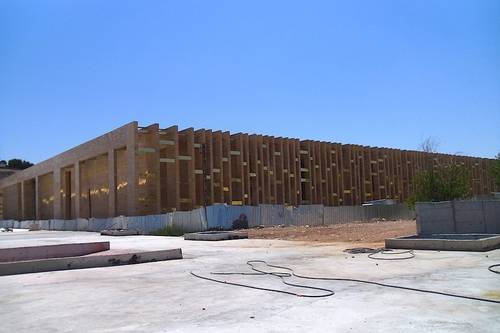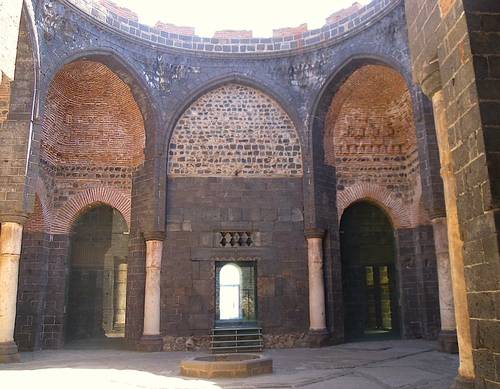Turkey has a comparatively long history in the business of setting up museums. As early as 1869 the decision had been taken to create a purpose-built Imperial Museum in Istanbul, grand enough to rival the Louvre in Paris. The idea was that provincial governors would fill it up by forwarding the best findings from their areas—from all over the Ottoman Empire, which was pretty extensive at the time. Under the leadership of Osman Hamdi Bey, a man of many talents, the scheme was very successful. Such was the success, in fact, that in places like Crete, the local assembly with jurisdiction over cultural affairs refused to grant excavation permits until the island had been freed of Ottoman occupation. It feared, quite rightly, that the finds would immediately be whisked off to Istanbul.

With the establishment of the Republic in 1923, the focus necessarily changed. Ankara was the new Turkish capital: Anatolia was centre stage. The Museum of Anatolian Civilisations willed by Atatürk—although it opened well after his death—was to be the showcase for the true land of the Turks, the high plateau. There again the scheme was grand, well in tune with the intended destiny of what was then a rather run down, impoverished town. And once again the provinces, this time of the newly founded republic, supplied the artefacts to go in the display cases.
With the dramatic development of Turkish archaeology in the wake of the salvage excavations linked to the country’s extensive dam-building programme, some local museums were also established—but on a small scale, truly provincial. All this has changed now. The three main cities of the southeast, Şanlıurfa, Gaziantep and Diyarbakır have joined in a race to outdo not only each other, but Istanbul and Ankara too.
In Gaziantep the Zeugma Mosaic Museum leads the way, with its caravan of concrete camels (for more on this, see Blue Guide Southeastern Turkey). It was opened in 2011. Stark and white, constructed in a bunker style, it must have looked very large when it opened just three years ago. But it will be dwarfed by the new Şanlıurfa museum.
Situated in the northern part of town, the Urfa project is on a different scale. For a start this is a double museum, with one main rectangular building and a sizeable circular construction next to it housing Hellenistic and Roman mosaics of exquisite quality. Westerners may be excused for thinking of ‘cathedral and baptistery’, but that was certainly unintended. If anything, the gigantic rectangular building (at least from a distance) looks like one of those mudbrick Mesopotamian temples with engaged pillars. Close up one can see that it is all built of limestone, partly clad with brass. Both museums are currently unfinished, and every time you make an enquiry, you get a different completion date. Signs of activity are muted. The building structures themselves are probably complete. The problem is the surroundings. Both structures sit in a landscape of utter desolation. Urfa has historically expanded towards the east. The northern part of town where the new museum is has never been an active or a busy area. The bus station was here and over time the district came to be occupied by shanty buildings, those gecekondu, ‘built overnight’ as the Turks graphically put it, and a cemetery. Now, however, the bus station has been relocated to shining new premises out of town. A four-lane highway has been driven through the district and the shacks have been bulldozed—at least partially. One can see where the demolition work came to a halt, the scars of unfinished work with more shanty buildings beyond. One cannot help making a parallel with the recent protests in Brazil about ‘world class facilities and world class services’. Even so, the people in Urfa are proud of their museum and, by the look of it, would rather have that than other amenities the money might buy.

In Diyarbakır the scene is similar and yet different. No new structure has gone up here. Instead the museum is part of an ambitious plan to renovate and spruce up the citadel overlooking the Tigris in the east of the walled town, specifically the older part, beyond the Artukid arch. Occupation here goes back to the beginning of time. Indeed it is only by exploring the area that one understands why Diyarbakır is where it is. Nowhere in the town centre does one catch a glimpse of the river. It is totally immaterial to the life of the modern town. Here on the extreme eastern corner of the citadel, however, or better still from the outside, one can see the precipitous basalt drop, affording a strategic location from which river traffic could be controlled. It all started here. Over time the citadel underwent many alterations and the final makeover was Ottoman, after which it was allowed to gently decay as the town expanded outside its walls to the north and west. People moved in and the usual shanties went up. A large courtyard building was turned into a police station-cum-prison. Municipal open-air swimming pools resonated with the shouts of excited teenage boys. The countryside crept in as well. An old lady still had a cow tethered by her front door as late as 2011 and a chicken-farming business was set up outside, between the walls and the river. The coops are still there but the birds have flown. All this is set to change. Work has been going on for about a decade. The citadel is to be frozen in its Ottoman garb and the police station will be an archaeological museum (the awkward discovery of modern human skulls has been explained away; see Blue Guide Southeastern Turkey). Other buildings will house administration and services, a children’s museum, an art museum and other facilities. The beautiful Artukid palace is to be a restaurant, where one will be able to dine in style under the stars (mercifully the collapsed ceiling will not be reconstructed). Presently progress is slow, though, and the promised completion time of five months seems unrealistic. One looks around: workers are very few. They may wear Unesco-style T-shirts (Diyarbakır hopes to get the citadel listed as a World Heritage Site) but that does not seem to inspire them with Stakhanovite zeal. There is still much to be done. The museum area has been cleared of private buildings but not the rest of the citadel. Structures have been demolished, or half demolished, but people still live in them, at least judging by the peppers and aubergine skins strung up to dry in the sun and the neat piles of wood ready for the freezing winter. It would not be possible for officialdom to drive through that. There is only so much that authoritarian, top down planning can do. So far, a lot of money has been spent: recouping it through tourism will be a mighty challenge. Whatever benefits such grand schemes will accrue, they will not be for the people whose livelihood has been disrupted. They may even ask: why should the past dwell in a mansion and the present sleep in a shack?
By Paola Pugsley, author of Blue Guide Eastern Turkey, Blue Guide Southeastern Turkey and The Black Sea Coast.






